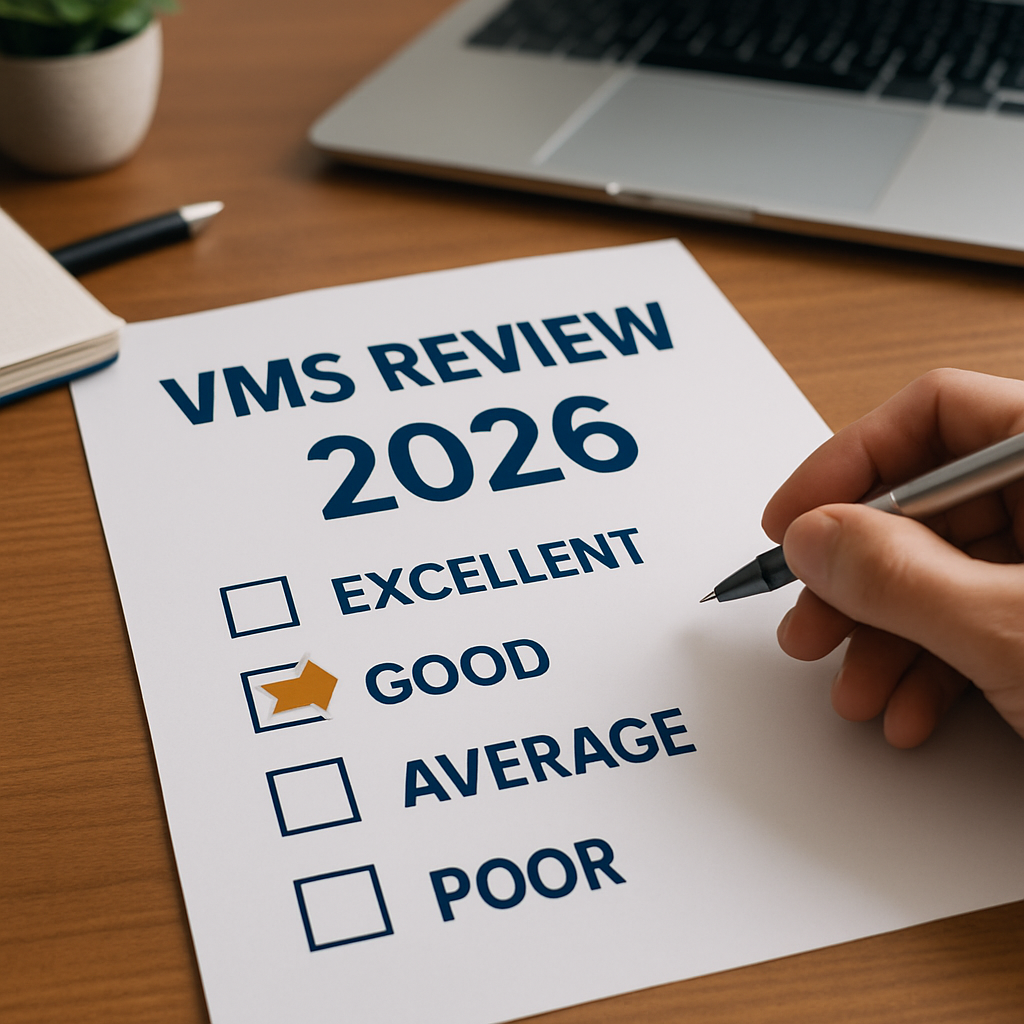Are you looking to transform how you manage your contingent workforce and the vendors they work with? No matter the size of your organization - whether you are a large enterprise or mid-market - A vendor management system (VMS) can make a big difference. In this article, look at the benefits of a VMS and the 4 steps to help you build a winning business case for VMS.
Lack of visibility into your contingent workforce management program and no control over vendor spend can have damaging implications for your business’s bottom line. That’s why many organizations are turning to external talent management technologies.
What is a VMS?
A VMS is a web and cloud-based application that allows your organization to source, engage and manage its entire non-employee workforce, as well as manage the vendors associated with that process, in one automated solution.
Benefits of a VMS
By using a VMS your business will have improved visibility into its non-employee workforce, better tracking of vendor performance, reduced costs, more efficient processes, complete consolidation of your vendors in one location and many other benefits.
How to build a winning business case for a VMS
For organizations still using manual processes or outdated automation tools, building a business case can feel overwhelming at first. It seems a huge task to centralize your entire external workforce management and vendor procurement processes.
The implementation of a vendor management system, however, will bring huge benefits to your business, including cost savings, better vendor choices, improved hiring decisions, increased efficiency and much more.
In fact, according to figures from Aberdeen Group Research, 89 percent of organizations that are considered “best-in-class” in the management of their contingent workforces had implemented VMS technology into their processes.
With these benefits in mind, how do you convince the rest of your organization that they should get behind a centralized non-employee management platform? In this blog, Conexis VMS lists a few important tips that will help you build a successful VMS business case.
1- Assess and Baseline the Current State of your Contingent Workforce
The first step in building your VMS business case should always start with an assessment of your current non-employee workforce processes and related costs. You need to find out where your organizations pain points are, and uncover all of the costs (including the hidden ones) both real dollars as well as dollars related to wasted time associated with your current processes. Here is a list of the big buckets of costs related to your contingent workforce:
- The worker pay rates – what he workers get paid by the hour
- The supplier markups – this includes their profit and statutory costs
- Headcount of workers – the total number of contractors you have
- The time spent by each internal department to source and manage your contingent workers: Talent Acquisition, Procurement, Legal, Finance, Hiring Managers & Approvers
- The rate of invoicing errors and issues that need to be resolved
2- Understand how VMS Implementation Will Benefit your Business
The most important aspect of any business case is to clearly define the benefits that your organization will realize once a change is made. With a vendor management system, there’s a huge number of benefits that you can present to your organization’s decision-makers.
To do this you need to understand how and at what level a VMS will help reduce your contingent workforce costs, as well as all the time needed to manage it. You also need to know what investment you need to make to implement a VMS and what costs will it take to manage it.
Understanding the future state will help you estimate these hard and soft dollar savings. The end result is a financial statement of benefits that the organization should expect to realize over a 5-year period.
A VMS will significantly improve your visibility into your non-employee workforce, and dramatically improve how you manage your vendors. The result will be an automated process that leads to greater cost savings, saved time, improved hiring decisions, the consolidation of vendors, more insightful analytics and much more.
3- Obtain Buy-in from Key Stakeholders
You now understand why your current external workforce management strategy is costing your business money, and you know how the implementation of a vendor management system will lead to cost savings, improved efficiencies and better vendor decisions. One thing you don’t yet have, however, is the buy-in of your stakeholders.
Whether you just report to a CEO or you have multiple teams that are part of the decision-making process (such as procurement hiring managers, HR, IT and finance), it’s important that you receive buy-in from every stakeholder involved in non-employee management.
These stakeholders are far more likely to support VMS implementation when they know how it will benefit and improve their current processes.
I would strongly suggest that anyone trying to build such a business case leverage one of our industries consultants to help them. The investment will pay off 10-fold.
4- Finding a VMS Provider
Last but not least, once you have successfully gained the buy-in from your organization, it’s time to start looking for a VMS provider that you can partner with. You’ll want to make sure the provider is a good fit for your business and the objectives that you want to achieve from your VMS implementation.
Do you want a provider that is hands-on and can help you every step of the way, or do you want a provider that can deliver a simple-to-use solution that allows you to work independently? Your VMS provider will be an important strategic partner so make sure they have the knowledge and expertise you need for the implementation and any on-going support.
Additional information on Building a Business Case for a VMS
- Watch our Webinar on "Getting Started with a 1st Gen VMS" with tips on building a business case. Hosted by Wayne Burgess and John Clark, Co-Founders of Conexis VMS. Topics include: Building a Winning VMS Business Case, Avoiding the Pitfalls & Challenges and Tips for Successfully Implementing a VMS.Watch Webinar replay here:
Getting Started with a 1st Gen VMS. - Download our Free "Ultimate VMS Buyer's Guide" that provides you with everything you need to know about choosing the right VMS for your company, as well as a checklist of questions to ask VMS Providers: Send me a copy of The Ultimate VMS Buyer's Guide.
- Schedule a Free No-Obligation "Getting Started" Consultation with Us - We can give you advice on how to get started: help you assess your current baseline, identify your key challenges, the benefits that a VMS will bring; and discuss how to build a business case for your organization and secure buy-in. Let's schedule a Free No-Obligation Consultation
Take the Next Step with Conexis VMS
Conexis is an award-winning VMS tailored specifically for mid-market contingent workforce programs. Leveraging the latest technology, Conexis delivers the expertise, reliability and security of enterprise systems, while offering the flexibility, user friendliness and tailored service you require. Conexis delivers enterprise level software - without the enterprise level complexity and cost.
Learn more about our Company and why organizations Choose Conexis VMS.
Contact Us
Whether you are looking to change your VMS solution, or just getting started, we are here to help. Contact Us for a Free No-Obligation Consultation to discuss your workforce challenges (and get immediate actionable insights). See how easy Conexis is to use by taking a quick 2 minute Self-Guided Tour, or Book a Personal Demo Today!
Additional Articles on this Topic








